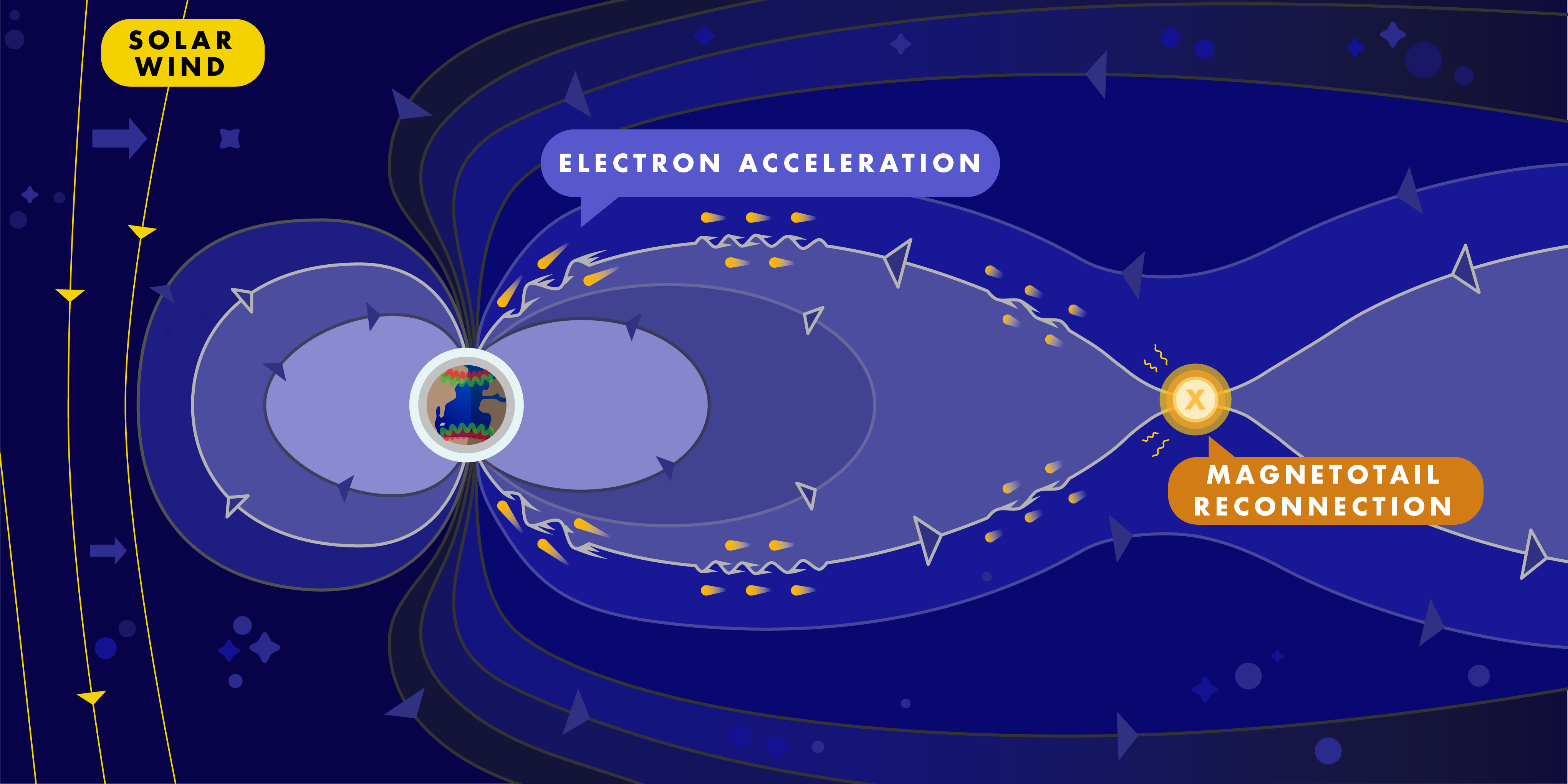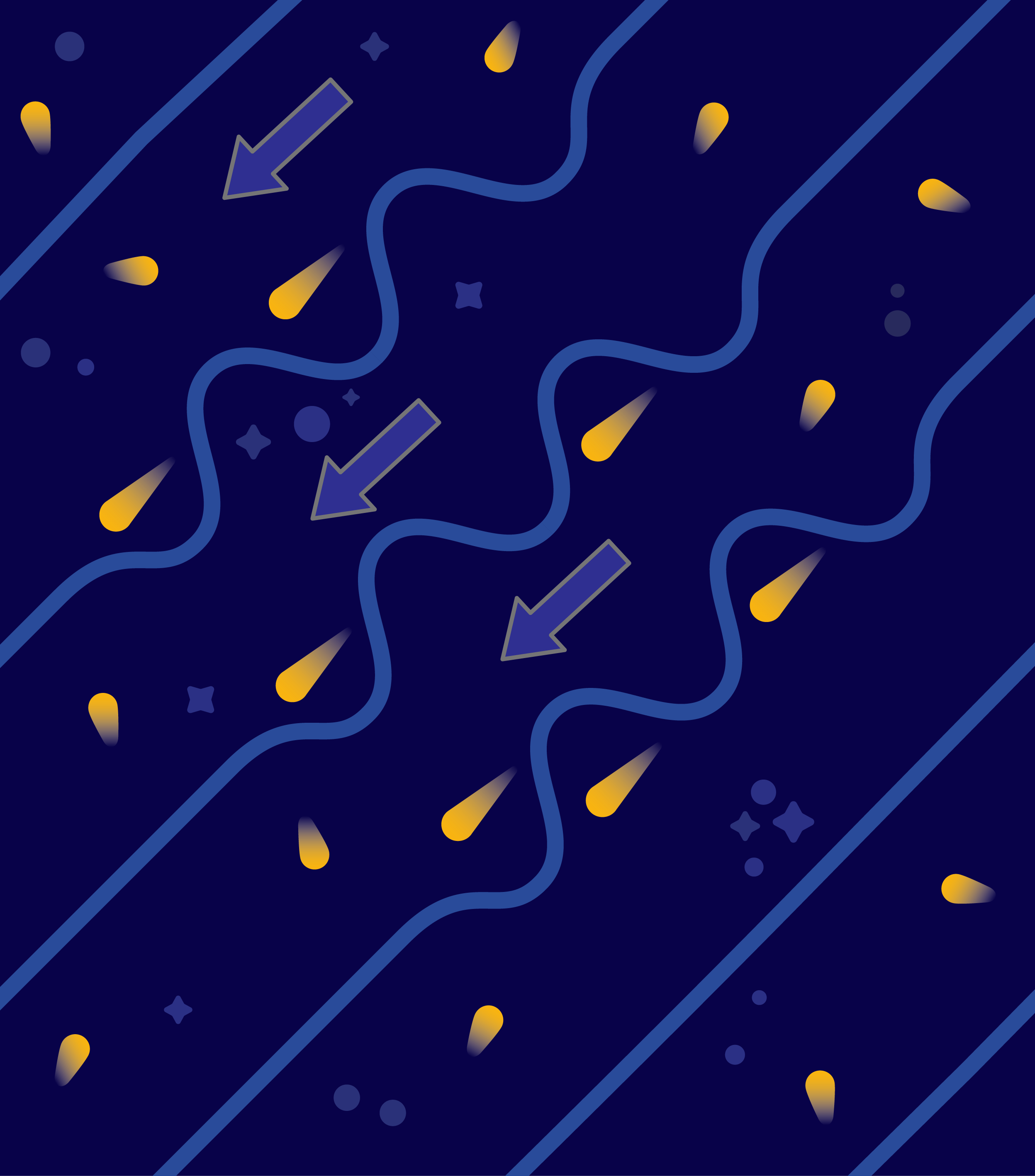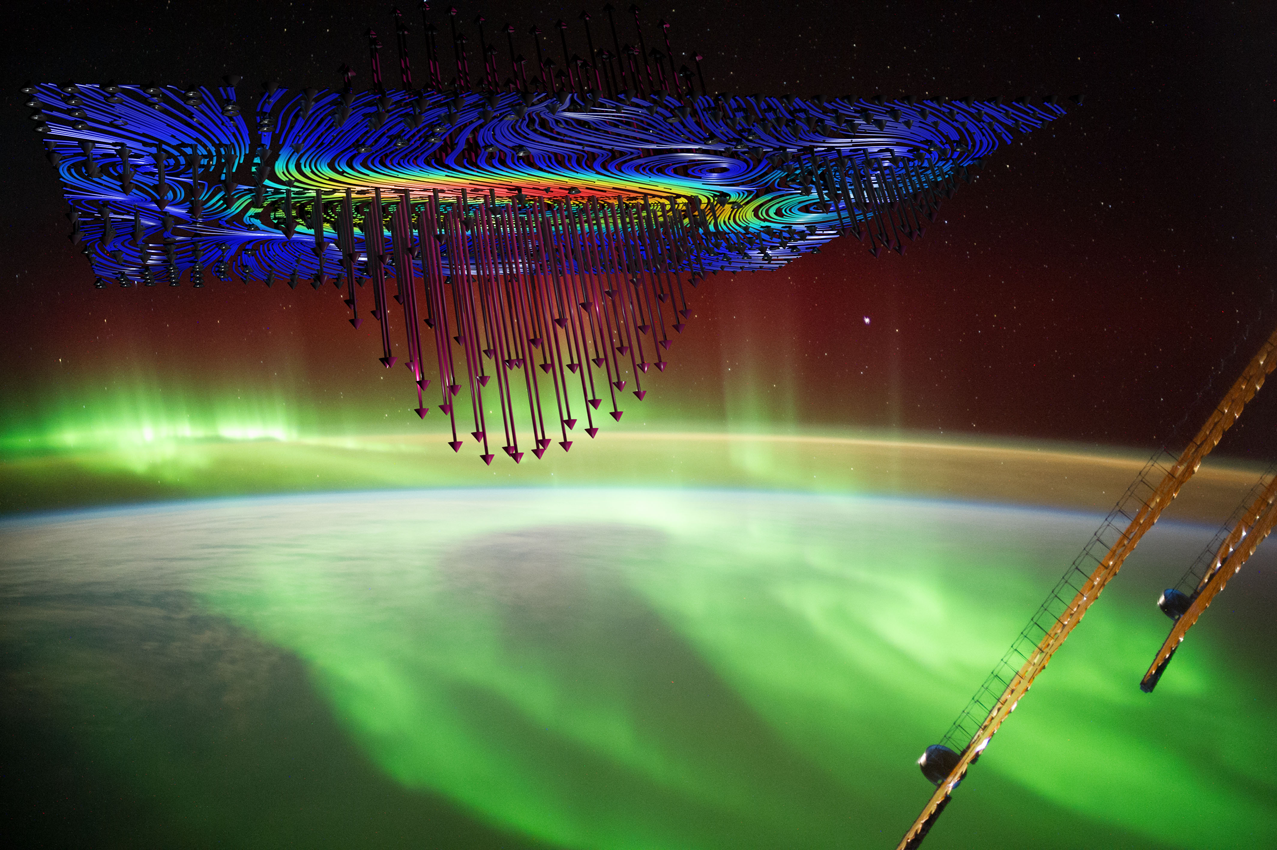Auroral Electron Acceleration
Here we describe the results in our recent paper in Nature Communications 12:3103 (2021),
Laboratory measurements of the physics of auroral electron acceleration by Alfven waves
The paper has also been featured as an Editor's Highlight for Nature Communications in the research area of “Astronomy and Planetary Science.”
Overview

The shimmering displays of the aurora borealis have always fascinated humankind since the dawn of civilization, first inspiring both awe and fear for their seemingly mysterious origin, but more recently capturing the attention of scientists curious to explain what causes this natural phenomenon. One of the proposed theories to explain the discrete auroral arcs—the most widely known type of the aurora, which appears as bright and undulating curtains of light—involves the acceleration of electrons by Earthward traveling Alfven waves, with a progression of events as follows.
Violent events on the Sun, such as solar flares and coronal mass ejections, strongly disturb the flow of the solar wind through the solar system and sometimes trigger severe geomagnetic storms at the Earth, accompanied by some of the most intense auroral displays. The dynamics of the geomagnetic storm drives a process called magnetic reconnection in the Earth's distant magnetotail, in which magnetic field lines break and reform, eventually snapping back towards the Earth due to magnetic tension, like a stretched rubber band that is suddenly released. This rebounding of the magnetic field launches Alfven waves that travel Earthward along the magnetic field. At altitudes below about three Earth radii (20,000 km, or 12,000 mi), where Alfven wave speed exceeds the electron thermal velocity, electrons moving in the same direction as the Alfven wave can be efficiently accelerated by the wave to higher speeds. These electrons effectively surf on the electric field of the Alfven wave, gaining speed through a mechanism known as Landau damping, in which the energy of the wave is transferred to the accelerated electrons, a process first discovered in 1946. The accelerated electrons, traveling at speeds up to 20,000 km/s (or 45 million mph), stream down along the Earth's magnetic field, eventually colliding with the oxygen and nitrogen atoms and molecules in the thin air of the upper atmosphere. The impact causes these atoms and molecules to emit light, resulting in the glow of the shimmering curtains of light in discrete auroral arcs.

Although observations from a number of sounding rocket flights and spacecraft missions have provided strong evidence in support of the theory that Alfven waves accelerate auroral electrons, limitations inherent to spacecraft measurements have prevented definitive measurements of the accelerated electrons and the Alfven wave that accelerated those electrons in space. To overcome these limitations, a group of researchers from the University of Iowa, Wheaton College (IL), and UCLA performed laboratory experiments on the Large Plasma Device (LAPD) at UCLA's Basic Plasma Science Facility, a national collaborative research facility supported jointly by the US Department of Energy and National Science Foundation. By performing a scaled laboratory experiment, conditions corresponding to those of Earth's auroral magnetosphere can be reproduced in the laboratory.

In the experiment, the team used specially designed instruments to launch Alfven waves down the 20 meter long LAPD chamber and then to measure the electrons accelerated by the electric field of the Alfven waves. This challenging experiment required a measurement of the very small population of electrons moving down the LAPD chamber at nearly the same speed as the Alfven waves, numbering less than one in a thousand of the electrons in the plasma. These particular electrons undergo resonant acceleration by the wave's electric field, similar to a surfer catching a wave and being continually accelerated as the surfer moves along with the wave. The physics of electrons "surfing" on the electric field of a wave is a phenomenon known as Landau damping, in which the energy of the wave is transferred to the accelerated electrons. The research team used an innovative analysis technique that combines the measurements of the wave's electric field and the electrons to generate a unique signature of the electron acceleration by Landau damping. Through numerical simulations and mathematical modeling, they showed that the signature of acceleration measured in the experiment agreed with the predicted signature for Landau damping. The agreement of experiment, simulation, and modeling provides the first direct test showing that Alfven waves produce accelerated electrons that cause auroras.
